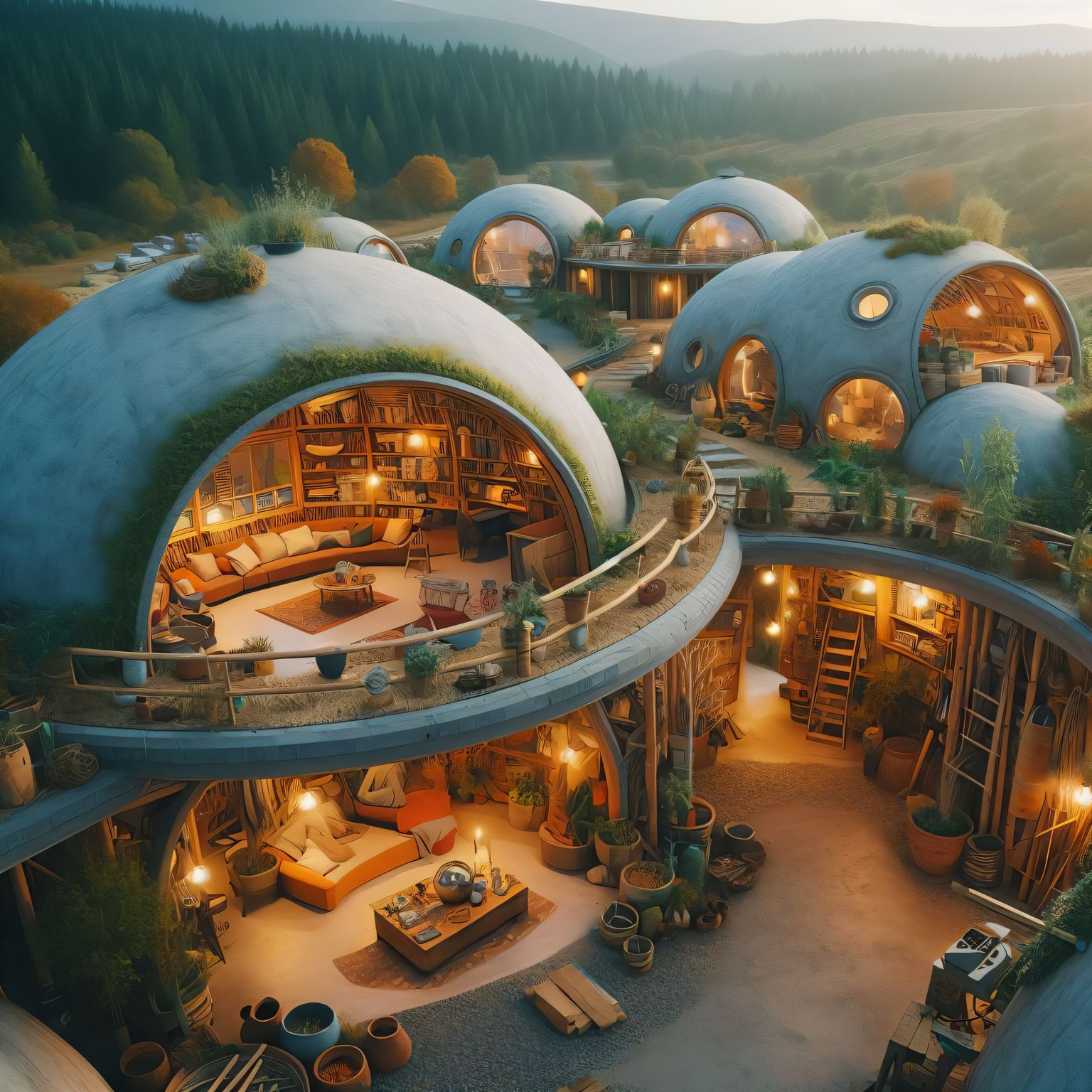Earthship homes are at the forefront of eco-friendly housing solutions, offering a unique blend of natural design and modern technology. These self-sufficient dwellings are built with minimal impact on our planet, making them an ideal choice for those seeking sustainable and resilient living. Let’s explore the fascinating world of these off-grid homes and discover how they are shaping a sustainable future.
Unraveling the Mystery of Earthship Homes
Earthship homes, a concept conceived by architect Michael Reynolds, represent a new era of self-sufficient residential structures. Built using a mix of recycled and natural materials, these homes are designed to be entirely self-reliant. They harness renewable energy sources such as solar power and rainwater, eliminating the need for external utilities. The goal is to create dwellings that can sustain human life indefinitely using only the resources within their immediate environment. This includes generating and managing necessities like water and electricity independently, thereby disconnecting from traditional utility grids.
Here are some key features that enable Earthships to realize this ambitious vision of sustainable living:
- Solar Orientation and Thermal Mass: These homes are strategically angled to maximize solar gain during winter and minimize overheating in summer. The thermal mass from dense earthen walls and floors helps regulate interior temperatures throughout the year.
- Rainwater Harvesting: Rooftop catchment systems and large cisterns collect and store rainwater, which is then filtered for indoor use and external irrigation.
- Greywater Recycling: Used household water is treated on-site without chemicals and redirected to nourish landscaping.
- Renewable Power: Electricity is generated via wind turbines and photovoltaic solar panels, and stored in batteries for off-grid energy independence.
- Indoor Food Cultivation: Integrated hydroponic and aquaponic systems allow for the cultivation of fish and organic produce within the home.
- Natural and Upcycled Building Materials: Local and recycled resources like earth-rammed tires for walls, reclaimed wood, and recycled glass bottles are used to create zero-waste structures.
This comprehensive integration of food, water, power, and waste management systems allows Earthships to operate independently of public infrastructure, thereby minimizing their environmental footprint. But how practical are they to build and live in?
Weighing the Pros and Cons of Earthship Homes
Modern Earthship construction focuses on creating aesthetically pleasing architecture without compromising on sustainable functionality. By leveraging passive heating/cooling, renewable energy, permaculture, and smart home automation technologies, they offer spacious and comfortable off-grid housing suitable for regions with moderate climates.
However, building these futuristic eco-homes requires specialized engineering considerations around thermal regulation, balancing solar capture relative to energy loads, and meeting codes for greywater treatment and indoor food cultivation. Obtaining building permits for experimental housing can also be challenging. Therefore, expert guidance is crucial for successfully planning and constructing these homes.
For those who are sustainability-minded and willing to invest time and resources upfront, Earthships present an opportunity to live a low-carbon lifestyle in harmony with nature.
Smart Earthship Communities: The Cities of Tomorrow
The Earthship concept has evolved beyond individual dwellings to encompass entire sustainable housing communities, such as Greater World near Taos, New Mexico. These communities pool shared infrastructure for water, power, and food, maximizing resource efficiency through community cooperation. The integration of smart automation and data analytics optimizes these closed-loop systems, paving the way for self-sufficient, resilient “arcologies”.
When scaled globally, the fusion of Earthship principles with smart technologies provides a blueprint for real-world cities to coexist sustainably with nature. By pioneering decentralized, regenerative infrastructure that supports a good quality of life, smart Earthship cities represent a feasible grassroots transition toward climate resilience. They serve as living laboratories for testing green building materials and renewable energy solutions, with potential applications for disaster relief and rural development worldwide.
Diving Deeper into the Earthship Movement
If the innovative architecture of Earthships has piqued your interest, there are numerous ways to immerse yourself in this sustainable living movement:
- Earthship Academy Workshops: The Earthship Academy, run by Michael Reynolds himself, offers workshops where you can learn the ins and outs of building an Earthship. These workshops provide hands-on experience with sustainable construction techniques and are a great starting point for anyone interested in Earthships.
- Volunteer Opportunities: Volunteering with an Earthship builder is another excellent way to gain practical experience. You’ll get to work with sustainable construction techniques firsthand and contribute to the creation of these eco-friendly homes.
- Educational Tours: Established Earthship homes and communities, like Greater World, are open for educational visitors. These tours offer a unique opportunity to see Earthship principles in action and learn more about sustainable living.
- Off-Grid Earthship Eco-Resorts: For a deeper exploration, consider a stay at an off-grid Earthship eco-resort. This immersive experience allows you to enjoy the Earthship lifestyle temporarily and gain a deeper understanding of what it’s like to live in one of these homes.
- Online Resources: There’s a wealth of information available online, including architectural drawings for homes ranging from one to three bedrooms. E-books and other online resources can help address any challenges you might encounter during the building process.
- Social Media Advocacy: Raise awareness about Earthships on social media by sharing media and sustainability facts. This not only helps spread the word about Earthships but also educates others about the importance of sustainable living.
- Support for Green Policies: Advocate for building codes that are friendly toward experimental sustainable housing. This can involve supporting environmental lobbying efforts or even getting involved in local politics.
By actively engaging with the Earthship movement, you can help refine the technologies and raise the necessary awareness to pave greener paths to future living in harmony with our planet.



